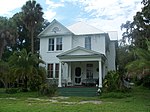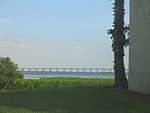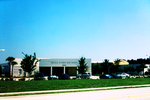Courtney Campbell Causeway
1934 establishments in FloridaBridges completed in 1934Bridges in Pinellas County, FloridaBridges over Tampa BayBuildings and structures in Clearwater, Florida ... and 9 more
Causeways in FloridaFlorida Scenic HighwaysFormer toll bridges in FloridaRoad bridges in FloridaRoads in Hillsborough County, FloridaRoads in Pinellas County, FloridaRoads in Tampa, FloridaTransportation buildings and structures in Hillsborough County, FloridaUse mdy dates from October 2018

The Courtney Campbell Causeway is the northernmost bridge across Old Tampa Bay, carrying State Road 60 between Clearwater, Florida in Pinellas County and Tampa, Florida in Hillsborough County.
Excerpt from the Wikipedia article Courtney Campbell Causeway (License: CC BY-SA 3.0, Authors, Images).Courtney Campbell Causeway
Courtney Campbell Causeway,
Geographical coordinates (GPS) Address Nearby Places Show on map
Geographical coordinates (GPS)
| Latitude | Longitude |
|---|---|
| N 27.9669 ° | E -82.6498 ° |
Address
Courtney Campbell Causeway
Courtney Campbell Causeway
34619
Florida, United States
Open on Google Maps









